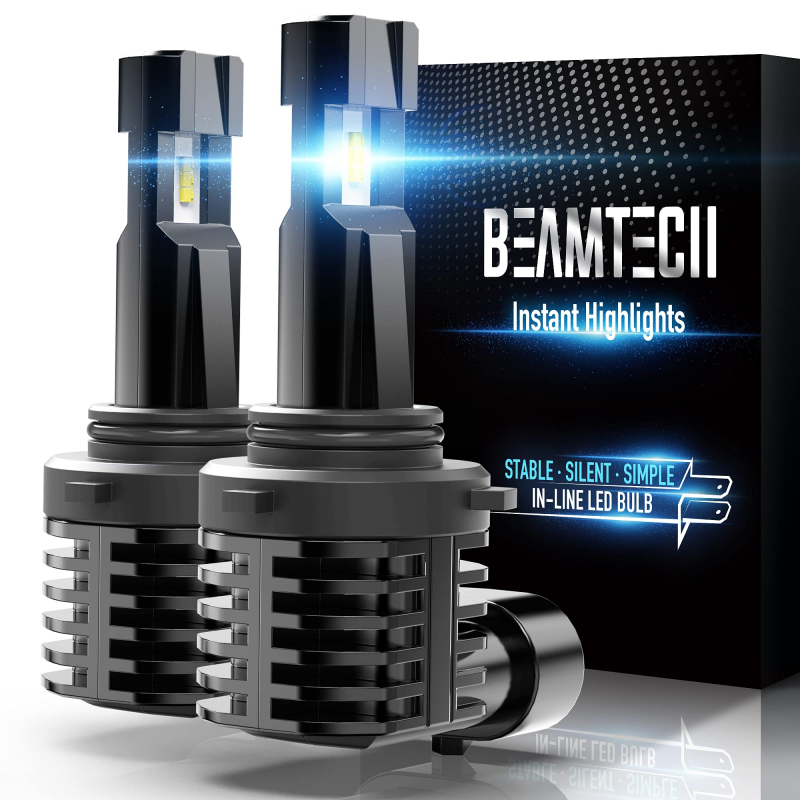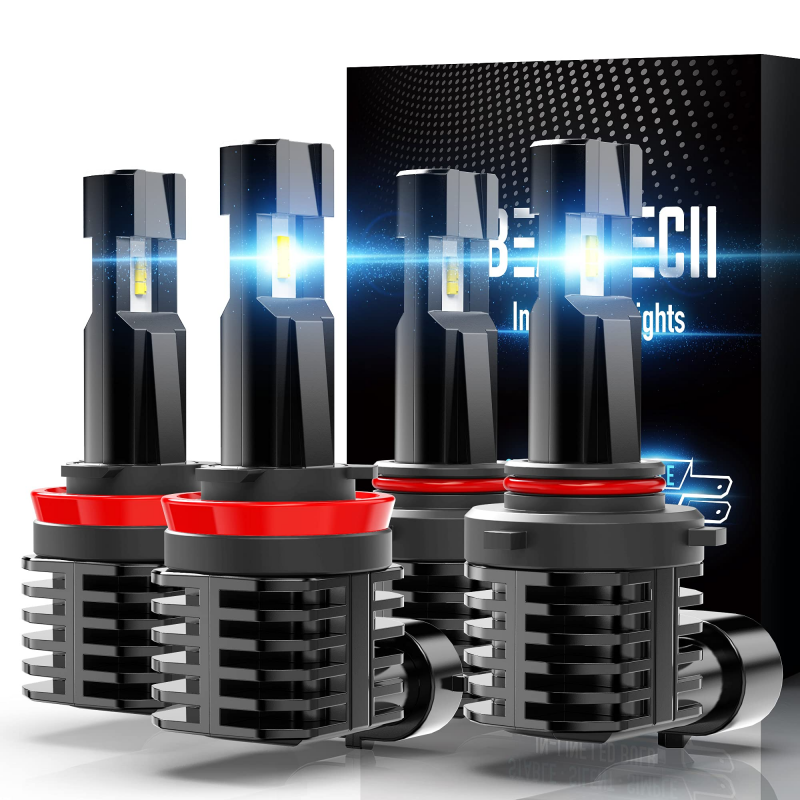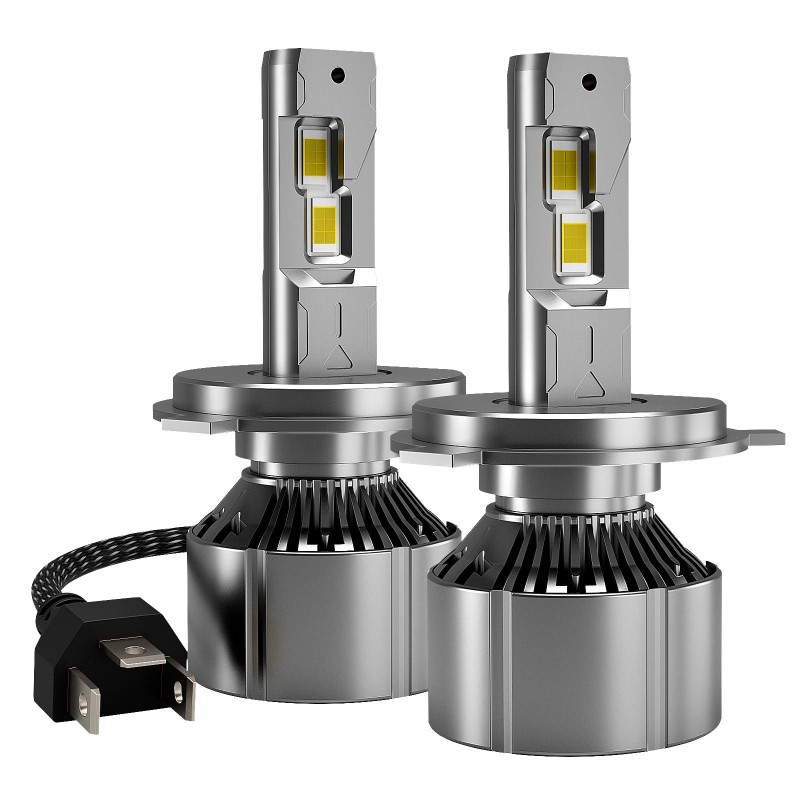Driving at night can be a daunting task, especially if your vehicle’s headlights are not providing adequate illumination. The importance of good visibility cannot be overstated; it is crucial for safe driving on dark roads, highways, or in inclement weather. In recent years, LED headlight bulbs for night driving have gained popularity due to their ability to produce bright, clear light while being energy-efficient. Unlike traditional halogen bulbs, LEDs offer significant advantages in terms of longevity, brightness, and power consumption. This article will delve into the various aspects of LED headlight bulbs, exploring their benefits, how to choose the right bulbs for your vehicle, installation tips, and maintenance to ensure optimal performance. By the end of this comprehensive guide, you will be equipped with the knowledge necessary to boost your night-driving experience effectively.

Understanding the Basics of LED Headlight Bulbs
LED headlight bulbs have revolutionized the way we drive at night. Before diving into the specifics, it’s essential to understand what LED headlight bulbs are and how they function.
- What are LED Bulbs? LED stands for “light-emitting diode.” Unlike traditional incandescent bulbs that produce light through heating a filament, LED bulbs use a semiconductor to convert electricity into light. This technology yields brighter lights while consuming less power.
- How Do They Work? When electricity passes through the semiconductor, it excites the electrons and causes them to release energy in the form of light. The design of LED headlight bulbs allows for focused beams that illuminate the road effectively.
- Comparisons to Other Bulb Types:
- Halogen Bulbs: Offer good brightness but have a shorter lifespan and consume more energy.
- Xenon (HID) Bulbs: Provide a high-intensity light but often require additional components for installation.
Their lifespan is generally less than that of LED bulbs.
- Energy Efficiency: One of the most significant advantages of LED bulbs is their energy efficiency. They use about 80% less power than traditional halogen bulbs, which translates to lower fuel consumption in vehicles with older electrical systems.
Understanding the fundamental workings of LED headlight bulbs lays the groundwork for appreciating their benefits and applications in night driving.
Benefits of Using LED Headlight Bulbs for Night Driving
The shift towards LED headlight bulbs for night driving is underscored by several compelling benefits that enhance both visibility and safety:
- Brighter Illumination: LED bulbs are significantly brighter than their halogen counterparts. This increased brightness provides better visibility on dark roads, allowing drivers to see potential hazards from a greater distance.
- Longer Lifespan: Typically, LED headlight bulbs have a lifespan ranging from 15,000 to 30,000 hours, making them far more durable than incandescent or halogen bulbs, which may only last about 1,000 hours. This longevity results in less frequent replacements.
- Improved Safety: With brighter, focused lighting, drivers can react more quickly to obstacles, pedestrians, and road signs. Enhanced visibility at night leads to safer driving experiences.
- Lower Heat Emission: LED bulbs produce less heat than traditional bulbs, which helps to minimize the risk of damage to the headlight assembly. This characteristic also contributes to energy efficiency.
- Variety of Styles and Colors: LED headlight bulbs come in various colors, including white, yellow, and even blue, allowing drivers to choose the hue that suits their preferences or enhances visibility in specific conditions.
- Environmentally Friendly: As LED bulbs are more energy-efficient and have a longer lifespan, their overall impact on the environment is less than that of traditional bulbs. Additionally, they do not contain hazardous materials like mercury.
These benefits illustrate why motor vehicle owners are increasingly gravitating towards LED headlight bulbs for night driving, making them a worthwhile investment.

Choosing the Right LED Headlight Bulbs for Your Vehicle
Not all LED headlight bulbs are created equal, and selecting the right ones for your vehicle is crucial. Here are some factors to consider when choosing LED headlight bulbs for night driving:
- Compatibility: Check your vehicle’s owner manual or use an online bulb finder tool to determine which type of bulbs are compatible with your headlights. Common bulb sizes include H1, H4, H7, and 9005, among others.
- Brightness Level: LED bulbs are rated in lumens, which measure brightness. Generally, look for bulbs with a lumen output between 2,500 and 7,000 lumens for optimal visibility. However, excessive brightness can also blind oncoming drivers, so ensure you are within legal limits.
- Color Temperature: Consider the color temperature of the LED bulbs, measured in Kelvins (K). A color temperature of around 5,000K to 6,000K produces a white light similar to daylight, providing clarity. Higher temperatures (6,500K and above) emit bluish light, which some drivers prefer for aesthetics but may not always be practical.
- Beam Pattern: The beam pattern is crucial for visibility; it should illuminate the road without causing discomfort to other drivers. Choose LED bulbs that are designed to produce a well-defined beam pattern to avoid glare.
- Cooling Systems: Some LED bulbs come equipped with built-in cooling systems, such as fans or heat sinks, to dissipate heat and extend their lifespan. Consider these features when choosing your bulbs for enhanced performance.
- Brand Reputation and Reviews: Look for reputable brands known for their quality and reliability. Reading customer reviews can provide insights into how well the bulbs perform in real-world conditions.
By carefully evaluating these factors, you can ensure that you select the best LED headlight bulbs for night driving that meet your specific needs.
Installation of LED Headlight Bulbs
Installing LED headlight bulbs can often be a straightforward process, but it requires some attention to detail. Here is a step-by-step guide to help you through the installation process:
- Preparation: Begin by purchasing high-quality LED bulbs that fit your vehicle’s specifications. Gather necessary tools, which may include gloves, a screwdriver, and possibly a bulb removal tool.
- Safety First: Always turn off your vehicle and disconnect the battery to avoid electrical shock during the installation process.
- Accessing the Headlight Assembly: Depending on the vehicle, access to the headlight assembly may vary. Consult your owner’s manual for specific instructions. In many cases, you will need to open the hood and remove any covers obstructing access.
- Removing Old Bulbs: Carefully disconnect the existing halogen or HID bulbs. This may involve twisting, pulling a harness, or removing a retaining clip. Avoid touching the glass of the old bulbs with your bare hands, as oil from your skin can shorten their lifespan.
- Inserting the LED Bulbs: Install the LED headlight bulbs into the housing, ensuring they fit securely. Ensure you do not twist or adjust the bulbs excessively, as this may damage the components.
- Reconnect the Harness: Once the LED bulbs are securely in place, reconnect the wiring harness. It should click into place firmly for a solid connection.
- Testing: Before securing any covers, turn on your vehicle’s lights to test the new LED bulbs. Check for proper brightness and alignment to ensure optimal visibility.
- Replace Covers: If everything is functioning correctly, replace any covers or components you removed earlier.
- Final Check: After installation, ensure everything is secure and that your headlights are properly aimed. Misalignment can lead to poor visibility and dangerous conditions while driving.
Following these steps carefully will help you successfully install LED headlight bulbs, improving your vehicle’s night driving capabilities.
Maintenance Tips for LED Headlight Bulbs
Maintaining LED headlight bulbs is essential for ensuring longevity and optimal performance. Here are some effective maintenance tips:
- Regular Inspections: Periodically check the condition of your LED bulbs to ensure they are functioning correctly. This includes checking for flickering, dimness, or burnt-out bulbs.
- Clean the Lenses: Keep the headlight lenses clean to maximize visibility. Use a soft cloth or a headlight cleaning kit to remove dirt, debris, or oxidation that may have built up over time.
- Adjust for Aiming: If you notice a change in the beam pattern or light output, it may indicate that the bulbs have become misaligned. Adjusting the angle of the headlights could improve visibility and enhance safety while driving at night.
- Protect Against Moisture: Ensure that the headlight housings are sealed correctly to prevent moisture intrusion, which can damage the bulbs. If you notice fogging inside the lenses, check the seals or consider replacing the bulbs.
- Avoid Excessive Heat: Keep the headlights free from obstructions that could cause overheating, such as dirt buildup or obstructive housing covers. Poor ventilation can shorten the lifespan of LED bulbs.
By implementing these simple maintenance practices, you can ensure that your LED headlight bulbs continue to provide excellent illumination for your night driving needs.
The Future of LED Headlight Technology
The advancement of LED technology continues to evolve, offering exciting possibilities for the future of vehicle lighting. Here’s an overview of emerging innovations in LED headlight technology:
- Adaptive Headlights: Some modern vehicles are increasingly incorporating adaptive headlights that adjust the direction and intensity of light based on speed and steering angle. This type of technology enhances visibility by illuminating curves and turns more effectively.
- Matrix LED Technology: This innovative design allows for selective beam control, enabling certain sections of the headlight to dim while maintaining brightness in other areas. Matrix LED technology improves visibility without causing glare for other drivers.
- Smart Headlights: As vehicles become more connected, smart headlights are emerging as an intelligent lighting solution. These headlights can integrate with navigation systems to adjust illumination based on route changes, traffic conditions, or even weather.
- Longer Lifespan: Continuous improvements in LED technology aim to enhance brightness and efficiency while extending bulb lifespans. The goal is to achieve even brighter illumination with lower energy consumption.
- Environmental Considerations: With an increasing focus on sustainability, manufacturers are investing in eco-friendly materials and manufacturing processes, ensuring LED headlight technology has a minimal environmental footprint.
As technology continues to advance, the future of LED headlight bulbs promises even greater advancements in safety and convenience for nighttime driving.

Conclusion
The exploration of LED headlight bulbs for night driving reveals their importance in enhancing visibility and ensuring a safer driving experience. With the advantages of brightness, energy efficiency, and longevity, these bulbs have become a popular choice among drivers looking for upgrades.
Choosing the right LED headlight bulbs, understanding the installation process, and following proper maintenance techniques can significantly improve your night driving capabilities. You are also well-informed about the emerging technologies that shape the future of automotive lighting, allowing you to make informed decisions.
Investing in quality LED headlight bulbs is not merely about aesthetics; it’s about enhancing your overall safety on the road. With many options available, you can easily find the perfect fit for your vehicle. By keeping your headlights in optimal condition, you ensure that you are well-equipped for any nighttime journey ahead.